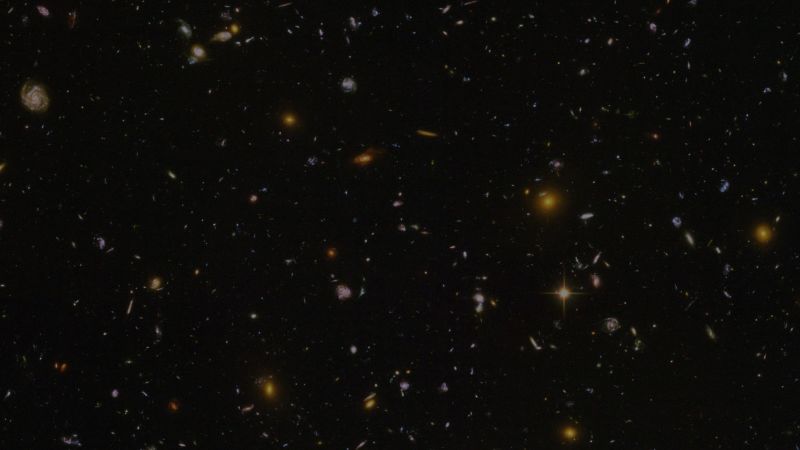Some of our strongest memories can be rooted in scents and sounds.
Human brains are wired in a way to make connections between memory and the senses, such as hearing a favorite song and recalling a road trip in which you listened to it on repeat — or smelling freshly baked bread and remembering times in the kitchen with your grandmother.
Scientists also rely on the senses to create connections to the past, analyzing fossils, genetics and even dirt to reconstruct the appearance of ancient humans and extinct creatures.
However, opportunities to connect with bygone sounds or smells have been more rare — until now.
A long time ago
The aroma of mummification balms used by ancient Egyptians has been recreated in what researchers are calling “the scent of eternal life.”
Scientists studied balm residue that remained inside canopic jars once used to store the mummified organs of a noblewoman named Senetnay when she died more than 3,500 years ago.
The aromatic balms included a complex blend of beeswax, plant oils and rare tree resins from distant lands that were likely brought to Egypt via sophisticated trade routes.
The researchers teamed up with a perfumer to resurrect the scent, which will add olfactory enhancement to a new exhibit at Denmark’s Moesgaard Museum in October.
Barbara Huber, doctoral researcher at Germany’s Max Planck Institute of Geoanthropology, said she hopes it will allow “visitors to truly ‘breathe in’ a fragment of antiquity.”
Climate changed
Polar bears have long been considered a threatened species, but scientists have now found evidence that links human activity with the survival rates of the arctic bears.
The animals depend on ice sheets to find their prey, but global warming is causing an increase in sea ice loss that starves the bears.
Sea ice loss is largely attributed to human-related greenhouse gas emissions. When the ice disappears, the bears are forced to go on land and attempt to survive without access to food.
The authors of the landmark study, published this week, hope their research could provide the bears with better protections going forward.
Meanwhile, Chinese people are living longer thanks to a targeted “war on pollution” to improve the country’s air quality. The effort also contributed to a global decrease in pollution levels, according to a new report.
Across the universe
The James Webb Space Telescope has peered into the colorful clouds of the Ring Nebula and shared stunning new portraits of the celestial phenomenon.
The planetary nebula, an enormous cloud of cosmic gas and dust, is home to the remnants of a dying star.
Webb’s fresh perspective has revealed unprecedented details that could help scientists understand the stellar forces behind the nebula’s chaotic appearance.
Separately, astronomers used 12 ground- and space-based telescopes to unravel the mystery of a rapidly spinning dead star that puffs out “cosmic cannonballs” into space.
We are family
Twenty years ago, archaeologists made an extraordinary discovery on the Indonesian island of Flores that added a new wrinkle to the complicated story of human evolution.
Despite new research in the decades since, the fossils belonging to an enigmatic ancient human hobbit known as Homo floresiensis are still the subject of heated scientific debate.
Recovered from a cave, the bones were those of an adult female hominin with primitive features that stood just over 3 feet (1 meter) tall and weighed 66 pounds (30 kilograms). The hobbit lived on the island about 50,000 to 60,000 years ago.
Scientists are still trying to understand how the hobbits reached the island, what contributed to their small stature, how they are related to humans — and what ultimately caused them to disappear after nearly 1 million years.
Wild kingdom
A surreal-looking Mediterranean monk seal, the “forest rodeo” of a macaque catching a ride on a deer’s back and a perfectly posed leopard are a few of the highlights of the 2023 Wildlife Photographer of the Year competition.
While some of the images capture the lighter side of the natural world, others showcase the ways humans are affecting the planet (and some of the photos aren’t for the faint of heart).
Kathy Moran, chair of the judging panel, said the judges felt a “powerful tension between wonder and woe” during the selection process.
The Natural History Museum in London created the competition 59 years ago, and 100 images will be exhibited once the winners are announced in October.
Curiosities
Catch up on these intriguing reads:
— Construction workers unearthed the ruins of an ancient Roman temple in Italy, and their initial discovery is just the beginning of treasures waiting to be unearthed.
— Pilots evacuating a Florida air base ahead of Hurricane Idalia’s landfall witnessed bright flashes in the sky called St. Elmo’s fire (and no, we’re not talking about the 1985 film).
— India launched its first spacecraft to study the sun on Saturday morning, just weeks after the country successfully landed a mission on the moon.
Did you miss this week’s blue supermoon? See images from around the world showcasing this rare sight, which won’t happen again until 2037.






